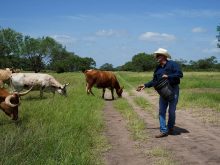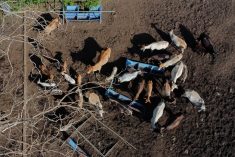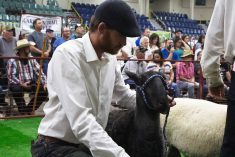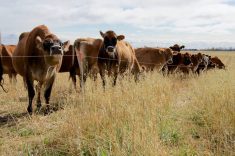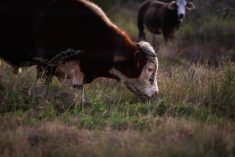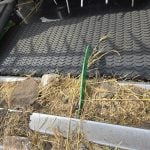The most important days for developing a sow’s reproductive abilities might be in the first two weeks of life, a North Carolina researcher told the Manitoba Swine Seminar.
Health and diet problems in the first 14 days can significantly reduce a piglet’s later output as a sow.
“It’s building a foundation, a foundation for the ovary,” said Billy Flowers of North Carolina State University in an interview.
“(Sow performance) can be influenced very early. If you start off with a bad foundation, everything else can seem fine when she starts having piglets, but the results will be worse.”
Read Also

U.S. cattle producers fear return of screwworm
Parasitic screwworm flies are pushing northward from Central America again after being officially eradicated from the United States in 1966, threatening $1.8 billion in damage to Texas’ economy alone.
Flowers studied the effect of piglet diarrhea on replacement gilts used in his university’s herd. He found that early diarrhea had a large effect on the gilts. More than a third of the gilts that had suffered diarrhea had not reached puberty by 240 days old, compared to less than 10 percent of the healthier pigs.
The farrowing rate of 87 percent for the gilts that had not had diarrhea was well above the 74 percent for those that had suffered the condition, and the healthier gilts had about one more pig born live in their first litter.
Flowers said this increased reproductive performance is probably due to ovarian development, which continues in pigs after birth. Egg nests in the ovaries of gilts that had been sick with diarrhea as piglets were much smaller than in the ovaries of pigs that were healthy in the first part of their lives.
Flowers said these results show the importance of keeping piglets free of disease. He suggested producers ensure piglets are getting good nutrition from their mothers. If the mother goes off its feed, the producer should try to get it eating or get the piglets to a foster sow.
He also suggested producers ensure that the piglets are kept free from swings in temperature.
“Make sure they don’t get chilled or get too hot,” he said.
For diarrhea, producers should make sure they treat all their piglets in the barn if it breaks out in one litter, or quarantine that sow and litter and make sure the disease doesn’t spread.
“The most important thing you can do is make sure bad things don’t happen,” said Flowers.





